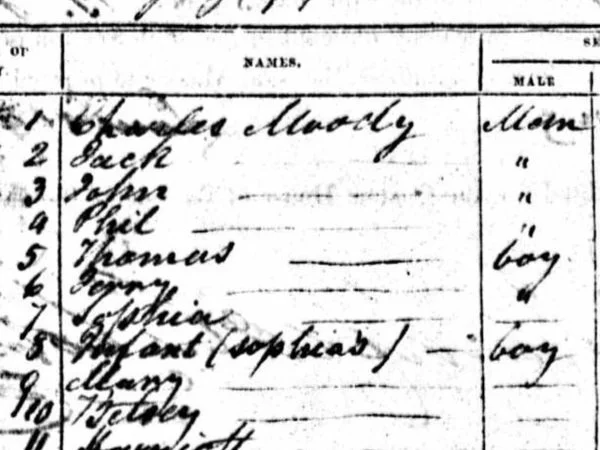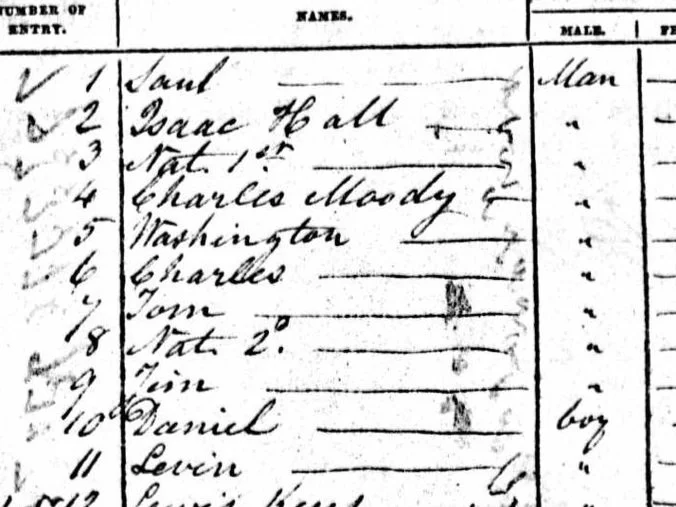CHARLES MOODY
-
[This is an edited excerpt of Dr. Jennie K. Williams's forthcoming book, Oceans of Kinfolk: the Coastwise Traffic of Enslaved Persons to New Orleans, 1820-1860. Please do not cite or circulate without permission.]
In April of 1819, Baltimore and Kentucky-based human trafficker David Anderson sent an enslaved man named Charles Moody to New Orleans aboard the ship Superb. Anderson instructed that all nine captives onboard were to be delivered to Anderson’s business partner, Hector McClean of New Orleans, but when the customs official climbed aboard the Superb to inspect the captives prior to their landing, Charles Moody was nowhere to be found. On the manifest of that voyage, the inspector wrote, “Charles Moody is missing.”
The manifest of the Superb is not the last record on which Charles Moody’s name appears. An individual of the same name and description is listed as a captive aboard brig Triton, which sailed from Baltimore in December of 1819. At the end of this second voyage to New Orleans, Moody was present and accounted for, but he didn't intend to stay that way. When the customs official climbed aboard the Triton to inspect its captives, Charles Moody asserted that he was a free man. This was a dangerous assertion to make, even if true. Black people were routinely abused, arrested and otherwise punished for asserting their right to freedom.
The events following Moody’s contestation of his enslavement are unknown, but the customs official did make a notation on the manifest: “Charles Moody says he is entitled to his freedom.”
It is possible that Charles Moody’s efforts to seize his freedom were successful—at least, for a time—because by 1823, Moody was once again in Baltimore. We only know as much, however, because he appears in May of that year as a captive aboard a third domestic slave ship sailing from Baltimore to New Orleans. On this, likely his final voyage to Louisiana, Moody was one of 22 captives aboard the brig Lawrence. All were the “property” of Austin Woolfolk. Moody and the rest of the ship’s captives were probably sold by John Woolfolk (a relative of Austin Woolfolk) in subsequent weeks.
Historical records from Charles Moody’s life
-
This is the manifest of the second voyage that carried Charles Moody from Baltimore to New Orleans. You can read more about records like this one here.
-
This is the manifest of the third voyage that carried Charles Moody from Baltimore to New Orleans. You can read more about records like this one here.


